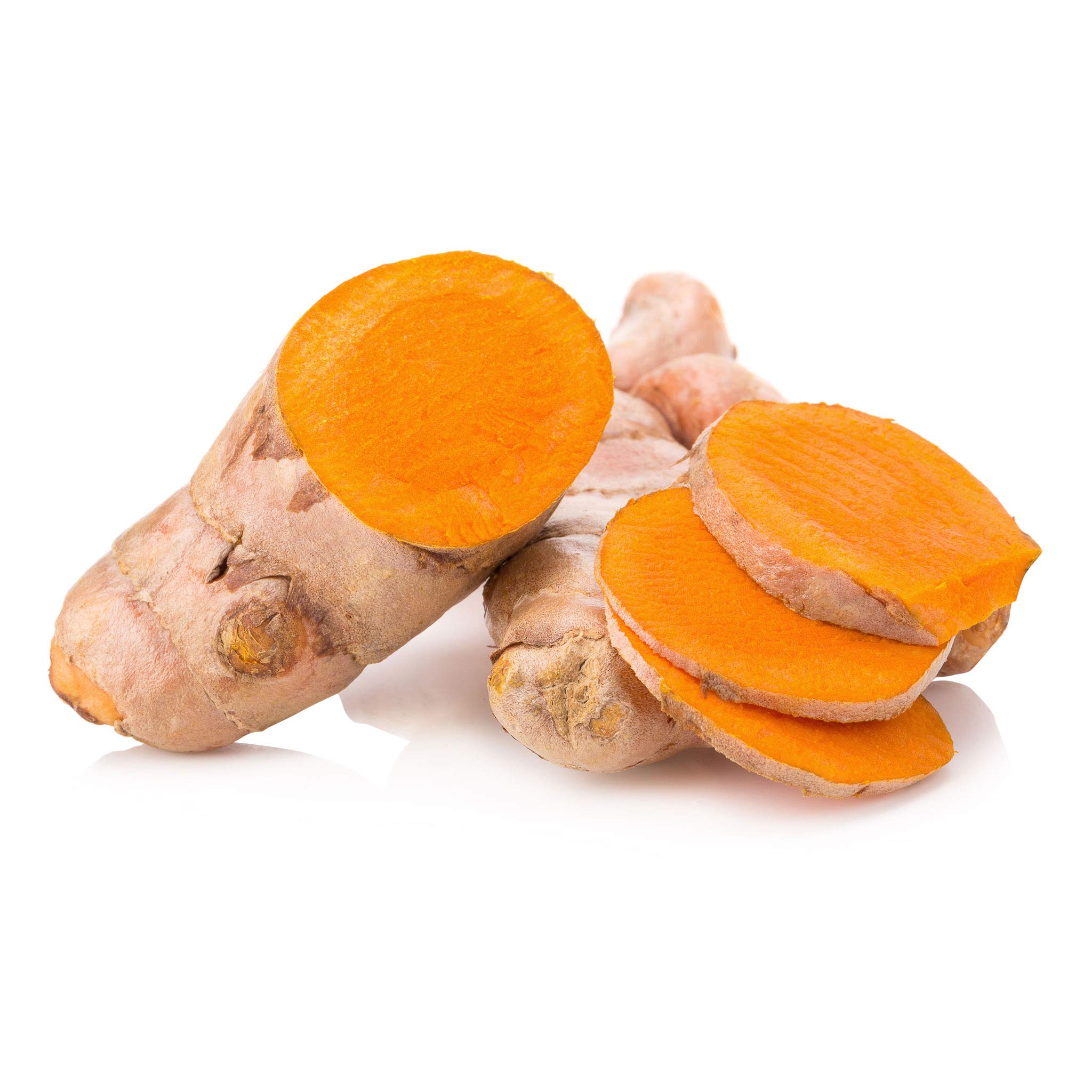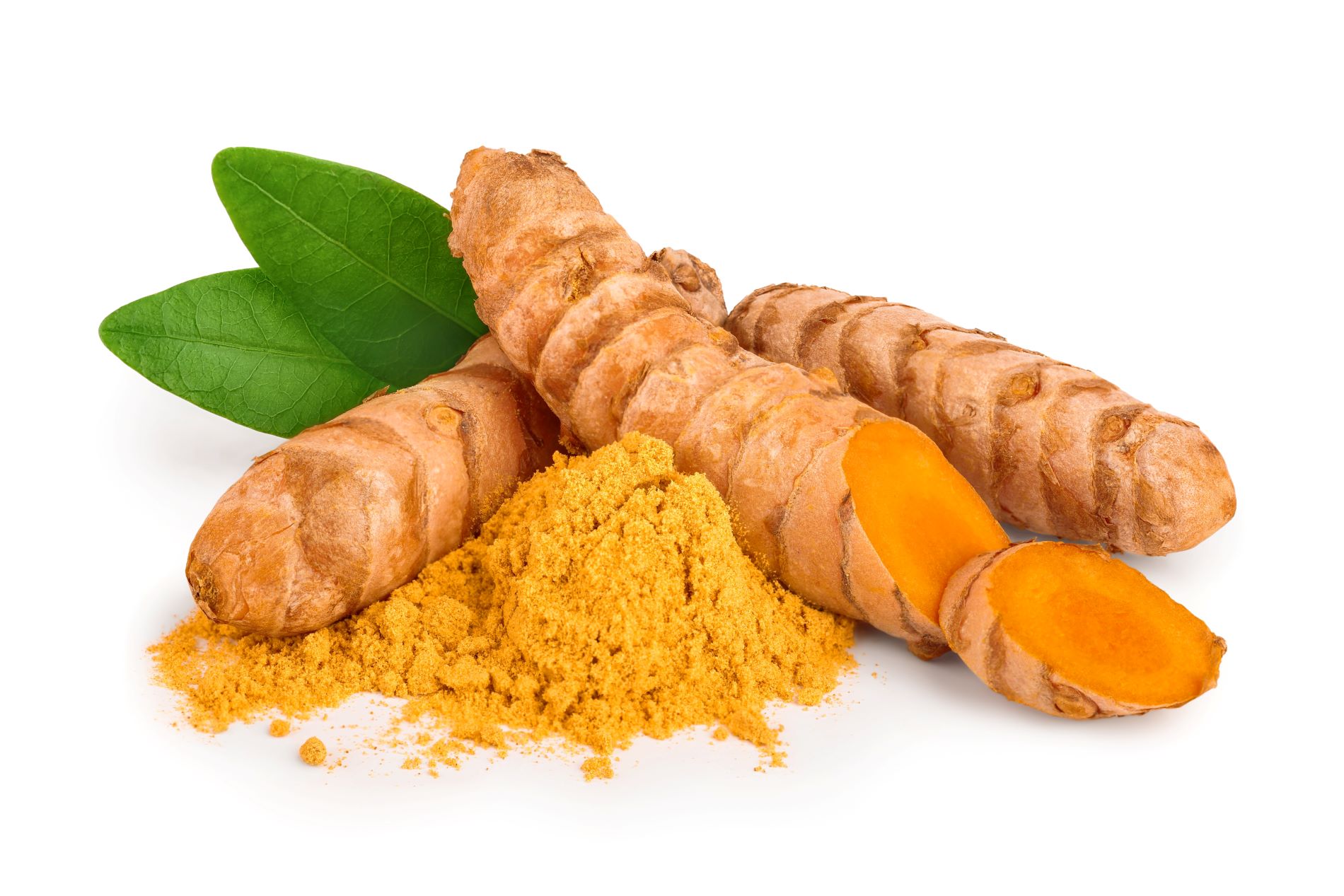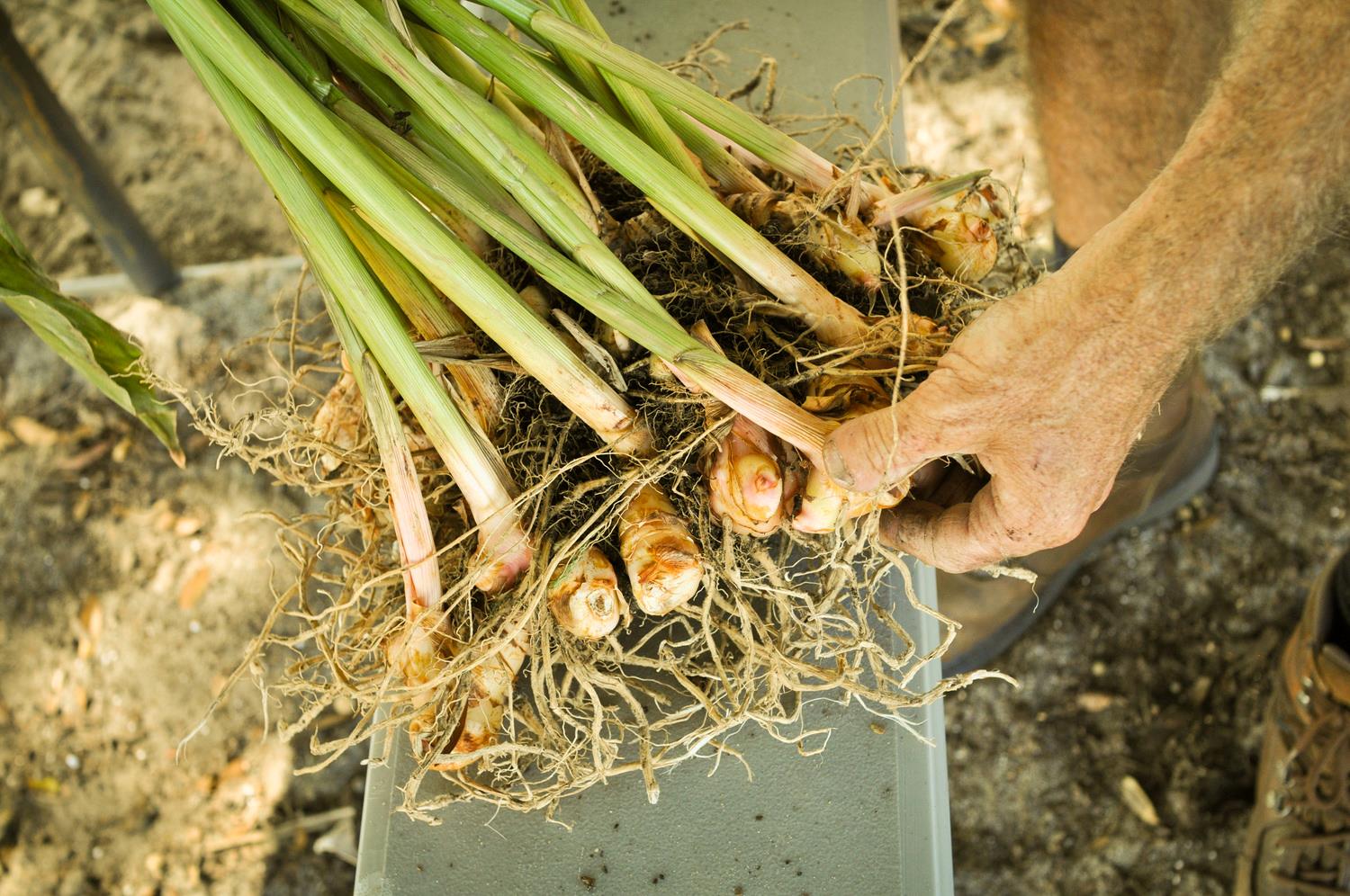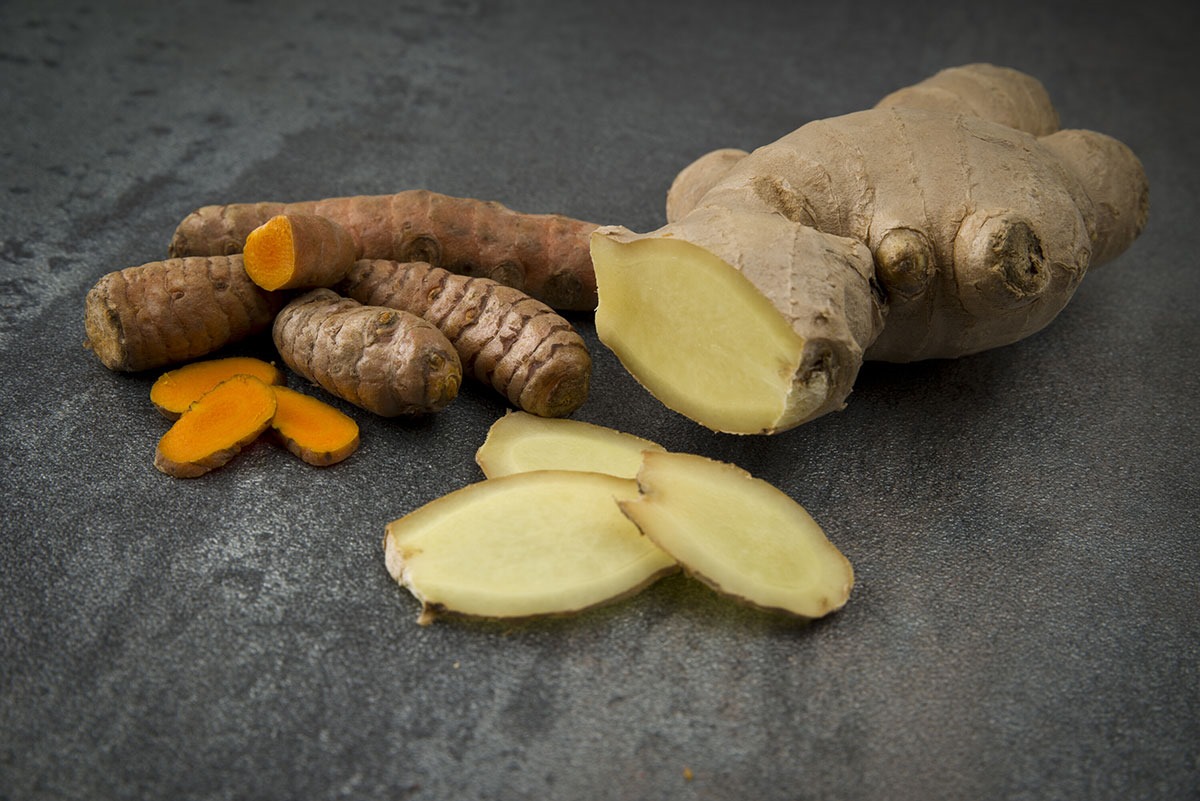

Articles
How To Store Turmeric
Modified: January 8, 2024
Learn the best methods for storing turmeric in this informative article. Keep your turmeric fresh and potent for all your cooking and health needs.
(Many of the links in this article redirect to a specific reviewed product. Your purchase of these products through affiliate links helps to generate commission for Storables.com, at no extra cost. Learn more)
Introduction
Welcome to the world of turmeric! This vibrant yellow spice, commonly found in Asian cuisines, brings not only a burst of color to your dishes but also a plethora of health benefits. Turmeric has been used for centuries in traditional medicine due to its powerful anti-inflammatory, antioxidant, and antimicrobial properties. From boosting immunity to supporting digestion, turmeric is a versatile ingredient that can elevate both the flavor and nutritional value of your meals.
However, when it comes to storing turmeric, many people are unsure about the best practices. Does it need special treatment? How long can you keep it without losing its potency? In this article, we will explore the different types of turmeric, optimal storage conditions, and tips to extend its shelf life. Whether you have whole turmeric roots, ground turmeric powder, or fresh turmeric, we’ve got you covered.
Let’s dive into the world of turmeric storage and unlock the secrets to keeping your turmeric fresh, flavorful, and packed with health benefits.
Key Takeaways:
- Elevate your dishes and health with vibrant turmeric! Store it in cool, dry places, choose organic options, and experiment with various recipes to unlock its potent flavor and numerous health benefits.
- Keep your turmeric fresh and flavorful by storing it in the right conditions. Use airtight containers, avoid exposure to light and heat, and explore creative ways to incorporate turmeric into your culinary creations.
Read more: How To Store Fresh Turmeric
Benefits of Turmeric
Turmeric, also known as Curcuma longa, has gained popularity in recent years for its remarkable health benefits. The active compound responsible for many of its therapeutic properties is called curcumin. Here are a few key benefits of turmeric:
- Anti-inflammatory properties: Turmeric has potent anti-inflammatory effects, which can help alleviate chronic inflammation in the body. Chronic inflammation is linked to various health conditions such as heart disease, arthritis, and cancer.
- Antioxidant activity: The curcumin in turmeric is a powerful antioxidant that helps protect the body against oxidative stress and damage caused by free radicals. This can support healthy aging and reduce the risk of chronic diseases.
- Enhances brain function: Turmeric has been shown to improve brain function and may help protect against neurodegenerative diseases like Alzheimer’s. It can also boost cognitive function and improve memory.
- Supports digestive health: Turmeric aids digestion by stimulating the production of bile in the gallbladder. It can help relieve symptoms of indigestion, bloating, and gas. Its anti-inflammatory properties may also help with conditions like irritable bowel syndrome (IBS).
- Boosts immune system: Turmeric has immune-modulating properties, which means it can help regulate and strengthen the immune system. It has antimicrobial and antiviral properties that can help fight off infections and keep your immune system healthy.
- Supports heart health: Curcumin in turmeric has been shown to improve heart health by reducing cholesterol levels, lowering blood pressure, and preventing the formation of blood clots.
- Anti-cancer properties: Curcumin inhibits the growth of cancer cells and may help prevent the development of certain types of cancer. It can also enhance the effectiveness of conventional cancer treatments.
These are just a few of the many benefits that turmeric offers. Incorporating turmeric into your daily routine can have a profound impact on your overall health and well-being.
Choosing the Right Turmeric
When it comes to choosing turmeric, there are a few factors to consider to ensure you’re getting a high-quality product. Here are some tips to help you choose the right turmeric:
- Whole turmeric vs. ground turmeric: Turmeric comes in two main forms – whole turmeric roots and ground turmeric powder. Whole turmeric roots are the fresh, unprocessed form of turmeric, while ground turmeric powder is made by grinding dried turmeric roots. Both forms have their benefits, but ground turmeric is more commonly used in cooking due to its convenience.
- Organic and non-irradiated: Look for turmeric that is certified organic to ensure it’s free from pesticides and other harmful chemicals. Additionally, check the label to ensure that the turmeric has not been irradiated, as this process can diminish its flavor and nutritional value.
- Bright color: The vibrant yellow color is a good indication of high-quality turmeric. Look for turmeric powder or roots with a rich golden hue. Avoid dull or faded colors, as they may indicate lower quality or old stock.
- Freshness: If you’re purchasing whole turmeric roots, look for firm, plump roots with smooth skin. Avoid roots that are shriveled or have soft spots. For ground turmeric powder, check the expiration date to ensure freshness.
- Source and origin: Consider the source and origin of the turmeric. While turmeric is primarily grown in India, other countries like Sri Lanka and Indonesia also produce high-quality turmeric. Look for turmeric from reputable brands or trusted suppliers.
By considering these factors, you can choose the right turmeric that meets your preferences and ensures its quality and freshness.
Optimal Storage Conditions
To keep your turmeric fresh and flavorful, it’s essential to store it properly. The following are the optimal storage conditions for different forms of turmeric:
- Whole turmeric roots: If you have whole turmeric roots, store them in a cool, dry place away from direct sunlight. A pantry or kitchen cabinet works well for this purpose. Ensure that the roots are kept dry to prevent mold or rot. You can wrap them in paper towels or store them in a breathable container, such as a mesh bag or a loosely closed paper bag.
- Ground turmeric powder: Ground turmeric powder is more susceptible to moisture, heat, and light, which can degrade its quality. Store it in an airtight container in a cool, dark place, such as a pantry or spice cabinet. Make sure the container is tightly sealed to prevent air and moisture from entering. Avoid exposing the container to direct heat or sunlight.
- Fresh turmeric: If you have fresh turmeric, it’s best to store it in the refrigerator. Wrap the fresh turmeric roots in a slightly damp paper towel or place them in a resealable plastic bag to maintain moisture. Remember to check the freshness of the roots regularly and use them within a few weeks.
It’s important to note that turmeric can lose its potency over time, especially when exposed to air, light, and moisture. Therefore, proper storage is crucial to preserve its flavor, aroma, and health benefits.
By following these optimal storage conditions, you can keep your turmeric fresh and ready to add a vibrant touch to your culinary creations.
Storing Whole Turmeric
If you have purchased whole turmeric roots, you’ll want to store them properly to maintain their freshness and flavor. Here’s how to store whole turmeric:
- Cleaning: Before storing, gently brush off any excess dirt from the turmeric roots. Avoid using water, as it can introduce moisture and cause the roots to spoil more quickly.
- Drying: Allow the turmeric roots to air dry for a few hours. This step helps remove any residual moisture and prevents mold growth during storage.
- Storage container: Choose a breathable storage container for the turmeric roots. Mesh bags or loosely closed paper bags work well for this purpose. These containers allow air circulation, preventing moisture buildup that can lead to rot.
- Cool, dry place: Find a cool and dry spot in your pantry or kitchen cabinet to store the turmeric roots. Ensure that the area is away from direct sunlight, which can compromise the quality of the roots.
- Checking for freshness: Regularly check the stored turmeric roots for any signs of decay, such as soft spots or mold. If you notice any spoiled roots, remove them immediately to prevent spoilage from spreading to the rest of the batch.
When stored correctly, whole turmeric roots can remain fresh for several weeks. However, keep in mind that the flavor and potency may gradually diminish over time. To maximize flavor, it’s best to use the turmeric roots as soon as possible.
Whole turmeric roots are a fantastic addition to various dishes. Grate or finely chop the roots and add them to curries, stir-fries, soups, or even smoothies to enjoy their unique flavor and health benefits.
Store turmeric in an airtight container in a cool, dark place to preserve its flavor and potency. Avoid storing it near heat sources or in direct sunlight.
Read more: How To Store Ginger And Turmeric
Storing Ground Turmeric
If you have ground turmeric powder, proper storage is crucial to retain its flavor, color, and potency. Follow these guidelines to store ground turmeric effectively:
- Airtight container: Transfer the ground turmeric powder into an airtight container or a glass jar with a tight-fitting lid. Make sure the container is clean and dry before transferring the powder.
- Dark and cool location: Store the container in a cool, dark place, such as a pantry or spice cabinet. Exposure to light and heat can degrade the quality of the turmeric, so ensure it is away from direct sunlight or any source of heat in the kitchen.
- Avoid moisture: Moisture is the enemy of ground turmeric powder, as it can lead to clumping and loss of flavor. Keep the container tightly sealed to prevent moisture from entering. Avoid placing it near the stove or dishwasher where humidity levels are higher.
- Check for freshness: Ground turmeric has a shelf life of around one to two years if properly stored. Periodically check the expiration date on the container to ensure the powder is still fresh. Discard any old or expired turmeric powder as it may have lost its flavor and potency.
- Use a dry spoon: When scooping out the turmeric powder for use, always use a clean and dry spoon. This helps prevent any moisture from entering the container and prolongs the shelf life of the remaining powder.
Properly stored ground turmeric powder can retain its vibrant color and potent flavor for an extended period. However, over time, the flavor and potency may gradually diminish, so it’s best to use it within the recommended shelf life.
Ground turmeric is a versatile spice that can be used in various recipes, such as curries, marinades, beverages, and even baked goods. It adds a warm, earthy flavor and imparts a beautiful golden hue to your dishes.
By following these storage tips, you can ensure that your ground turmeric remains fresh and adds a delightful touch to your culinary creations.
Storing Fresh Turmeric
Fresh turmeric, with its vibrant orange color and distinct flavor, is a prized ingredient in many cuisines. Proper storage of fresh turmeric will help maintain its freshness and extend its shelf life. Here’s how to store fresh turmeric:
- Trimming: If there are any leaves or stems attached to the fresh turmeric, trim them off. This will help prevent moisture loss and keep the turmeric in better condition.
- Refrigeration: Fresh turmeric should be stored in the refrigerator to maintain its freshness. Wrap the turmeric roots individually in a slightly damp paper towel to provide some moisture and prevent them from drying out.
- Resealable bag or container: Place the wrapped turmeric roots in a resealable plastic bag or an airtight container. This will help keep them fresh and prevent any strong odors from spreading to other foods in the refrigerator.
- Proper temperature: Set your refrigerator temperature to around 40°F (4°C), as this is the ideal temperature for preserving fresh produce. Avoid storing fresh turmeric in the coldest areas of the fridge, such as near the back or in the vegetable crisper, as the temperature might be too low.
- Checking for freshness: Regularly inspect the stored fresh turmeric for signs of decay. Discard any turmeric roots that have become moldy, shriveled, or have soft spots.
- Consume within a few weeks: It’s best to use fresh turmeric within a few weeks of purchase. Over time, the roots may lose their flavor and become less potent.
Storing fresh turmeric properly will help prolong its shelf life and preserve its flavor. When you’re ready to use it, you can grate, chop, or slice the turmeric roots and incorporate them into various dishes, such as curries, soups, stir-fries, or even in smoothies for an added nutritional boost.
Remember that fresh turmeric has a stronger flavor compared to its dried counterpart, so you can adjust the amount used in your recipes accordingly. Enjoy the vibrant and aromatic qualities of fresh turmeric by storing it correctly and using it to elevate your culinary creations.
Ways to Extend Turmeric Shelf Life
Turmeric is a valuable spice that can bring flavor and health benefits to your dishes. To maximize its shelf life and ensure it remains fresh and potent, consider the following tips:
- Store in appropriate containers: Use airtight containers or resealable bags to store your turmeric. This will prevent air, moisture, and odors from affecting its quality. Make sure the containers are clean and dry before transferring the turmeric.
- Avoid exposure to light: Light can degrade the quality of turmeric, leading to color loss and diminished flavor. Store turmeric in a cool, dark place away from direct sunlight to maintain its vibrancy.
- Keep away from heat: Heat can cause turmeric to lose potency and flavor. Avoid storing turmeric near the stove, oven, or other sources of heat in your kitchen.
- Minimize moisture: Moisture can lead to mold and spoilage. Keep turmeric dry by storing it in a cool and dry environment. Avoid using wet utensils when handling turmeric.
- Use additives: Adding a small food-safe moisture absorber, such as a silica gel packet, can help absorb excess moisture and prolong the shelf life of turmeric.
- Avoid cross-contamination: Keep turmeric separate from strong-smelling spices or ingredients to prevent flavor transfer. Turmeric has a strong aroma that can easily permeate other spices if stored together.
- Keep away from air: Oxygen can cause turmeric to lose its flavor and become stale. Ensure that the containers used for storing turmeric are tightly sealed to prevent air from entering.
- Check for freshness regularly: Periodically inspect your turmeric for signs of spoilage, such as mold, discoloration, or a rancid smell. Discard any turmeric that shows signs of deterioration.
- Consider freezing: If you have excess fresh turmeric or want to extend the shelf life of ground turmeric, you can freeze it. Wrap individual turmeric roots in plastic wrap or place ground turmeric in a freezer-safe container before freezing. Thaw frozen turmeric in the refrigerator before use.
By following these methods, you can extend the shelf life of your turmeric and ensure that it stays fresh and flavorful for longer periods. Remember that turmeric will gradually lose its potency over time, so try to use it within its recommended shelf life for the best flavor and health benefits.
Tips for Using Stored Turmeric
Stored turmeric, whether in whole or ground form, still holds its vibrant flavor and health benefits. Here are some tips to make the most out of your stored turmeric:
- Inspect for freshness: Before using your stored turmeric, check its color, aroma, and texture. If it has any signs of spoilage or an off smell, it’s best to discard it and use a fresh batch.
- Grind whole turmeric as needed: If you have stored whole turmeric roots, consider grinding them into powder as needed. Ground turmeric has a shorter shelf life compared to whole roots, and freshly ground turmeric offers more potent flavor and better nutritional benefits.
- Experiment with different recipes: Don’t limit yourself to using turmeric in Indian curries alone. Explore different cuisines and experiment with recipes where turmeric can enhance the flavor and color. It pairs well with vegetables, rice, lentils, meats, smoothies, and even baked goods.
- Enhance the absorption of turmeric: Turmeric’s active compound, curcumin, is better absorbed by the body when consumed with black pepper and healthy fats. Consider adding a pinch of black pepper and using turmeric in dishes cooked with oil or coconut milk for optimal absorption.
- Add turmeric towards the end of cooking: To preserve the flavor and nutritional benefits of turmeric, add it towards the end of your cooking process. Heat and extended cooking time can degrade its flavor and potency.
- Pair turmeric with other spices: Turmeric blends well with many other spices, such as cumin, coriander, ginger, cinnamon, and paprika. Experiment with different spice combinations to create unique flavor profiles in your dishes.
- Consider turmeric in beverages: Turmeric can be added to warm milk, tea, or smoothies to create flavorful, health-boosting beverages. Combine it with other ingredients like ginger, honey, or cinnamon for added flavor.
- Use as a natural food coloring: Turmeric’s vibrant yellow color can be used as a natural food coloring alternative. Add a pinch of turmeric to rice dishes, sauces, or dressings to give them a beautiful golden hue.
- Store ground turmeric in the freezer: If you need to store ground turmeric for an extended period, consider freezing it in an airtight container to maintain its freshness and potency. Thaw and use as needed.
By following these tips, you can unleash the flavor and nutritional benefits of your stored turmeric and elevate your culinary creations. Let your creativity flow and enjoy the fantastic flavors that turmeric brings to your dishes.
Read more: How To Store Turmeric Powder
Conclusion
Turmeric is a remarkable spice that not only adds a burst of color and flavor to your dishes but also offers a plethora of health benefits. By understanding the best practices for storing turmeric, you can ensure that it remains fresh, flavorful, and packed with its potent properties. Whether you have whole turmeric roots, ground turmeric powder, or fresh turmeric, proper storage is key to maintaining its quality and maximizing its shelf life.
Remember to choose the right turmeric by selecting organic, vibrant-colored options and considering the source and origin of the spice. Optimal storage conditions involve keeping turmeric in cool, dry places away from light and heat. Whole turmeric roots should be stored in breathable containers, ground turmeric powder in airtight ones, and fresh turmeric in the refrigerator. Regularly check for freshness and discard any spoiled turmeric to prevent spoilage from affecting the rest.
To extend turmeric’s shelf life, you can adopt various practices such as using airtight containers, avoiding exposure to light and heat, minimizing moisture, and using moisture absorbers. Additionally, consider freezing turmeric if you have excess or want to extend the shelf life of ground turmeric.
When it comes to using stored turmeric, remember to inspect for freshness, grind whole turmeric as needed, explore different recipes and cuisines, pair turmeric with complementary spices and ingredients, and take advantage of its vibrant color as a natural food coloring alternative.
In conclusion, by implementing the strategies and tips outlined in this article, you can make the most out of your stored turmeric, from preserving its freshness to incorporating it into a wide range of dishes. Embrace the bold flavor, vibrant color, and numerous health benefits of turmeric as you elevate your culinary creations and embark on a journey of wellness.
Frequently Asked Questions about How To Store Turmeric
Was this page helpful?
At Storables.com, we guarantee accurate and reliable information. Our content, validated by Expert Board Contributors, is crafted following stringent Editorial Policies. We're committed to providing you with well-researched, expert-backed insights for all your informational needs.














0 thoughts on “How To Store Turmeric”